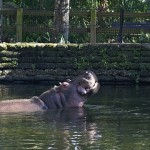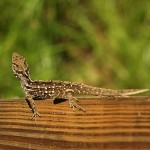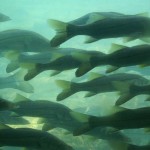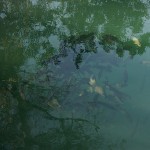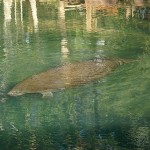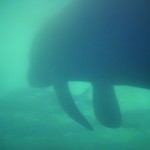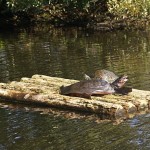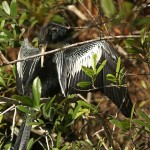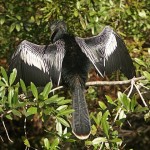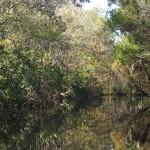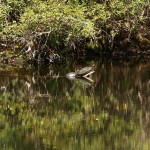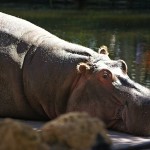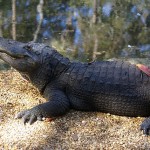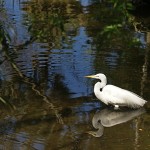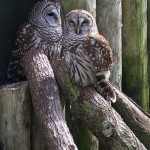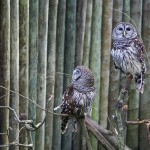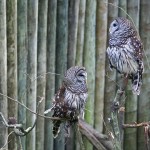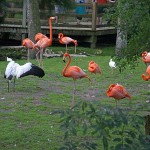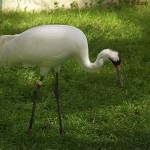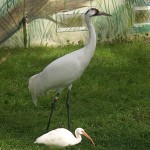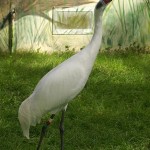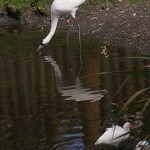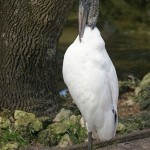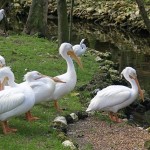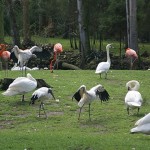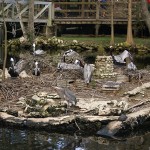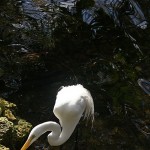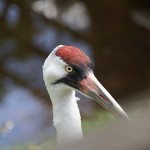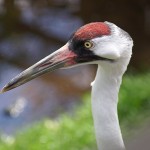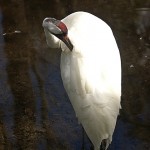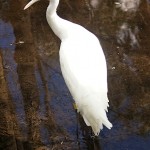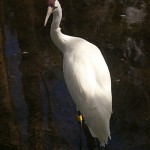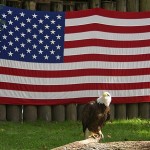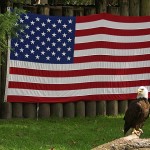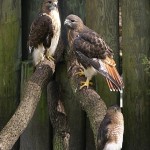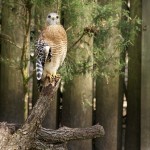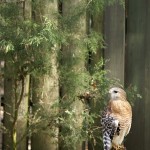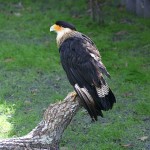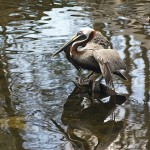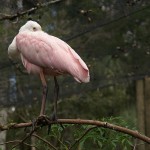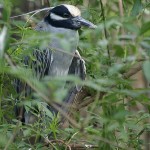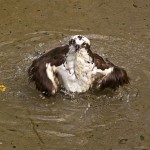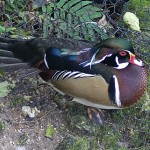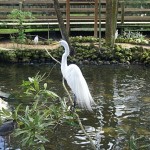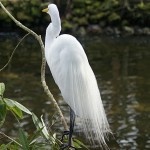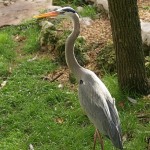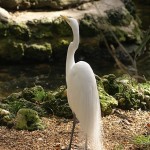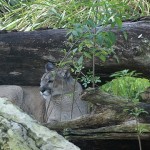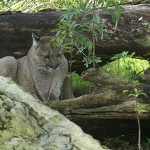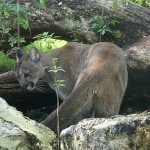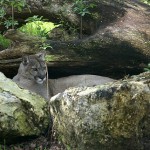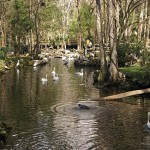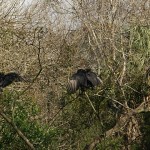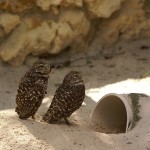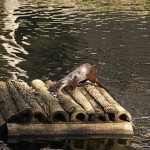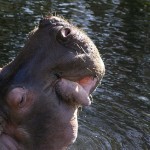At sunrise in Williston we had pleasant temperatures in the upper 50’s with heavy fog. The forecast for the afternoon was partly sunny and dry with a high near 80 degrees and the forecast for Homosassa was basically the same so we decided to head to the State Park located there. I have included a few photos with this post as a gallery at the end. The maximum dimension is 400 pixels. I have posted a separate photo gallery for this date with more photos in a larger size with a maximum dimension of 640 pixels.
The Ellie Schiller Homosassa Springs Wildlife State Park (HSWSP) in Homosassa, Florida is a unique place. Located at the headsprings of the Homosassa River, it is a rehabilitation facility for injured wildlife, including the endangered West Indian Manatee. Located WSW of Dunnellon, Florida and about 50 miles from Williston, there are several other state parks in the area, most notably the two at Crystal River and the one at Weeki Wachi, as well as several National Wildlife Refuges encompassing miles of Gulf Coast shoreline and thousands of acres.
Although Williston is a small town of ~2,200 permanent residents (and another 600 – 800 RVers) it is something of a crossroads. There are three major roads that intersect at the heart of Williston creating six radials in/out of town. US-27/41 runs NNW to Archer while US-27/FL-500 runs SW to Ocala and US-41 continues S to Dunnellon. FL-121 runs NNE to Gainesville and SSE towards Homosassa. US-27alt/FL-500 heads WNW to Bronson where it intersects US-24 heading SW to Cedar Key and NW to Archer. The I-75 exit at the SW corner of Gainesville is only 15 miles away via FL-121 and the exit 354 on the west edge of Ocala is only 22 miles via US-27. At our site at Williston Crossings we do not hear any highway noise, yet we have ready access to this part of Florida and are within two hours drive time of Tampa / St. Petersburg and the greater Orlando area.
HSWSP is another state park that was originally a private “attraction.” As a private attraction it had a small zoo with many exotic animals that were not native to Florida. When the state took over the facility I the 1970’s a plan was put in place to relocate all of the non-native animals to appropriate zoos and shelters and turn the grounds into a place to care for sick and injured animals while making them accessible to the public. The Florida State Park system has accomplished this goal and parks like HSWSP are no doubt one of the reasons that the FSP system has been voted best in the nation twice in the last 14 years.
We spent four and a half hours at the park. The Visitor Center is on US-19/98 with ample, easy access parking. Daily admission is $13 per person, but our annual park pass was good for admission for two people. To get to the actual park we rode one of the river boats. The trip took about 20 minutes and was narrated by the captain in an entertaining and informative way. There was also a “tram” that goes back and forth on a park road.
There was one animal that the FSP system was not able to place, a hippopotamus name Lou. A petition drive was launched asking the Governor to let Lou stay at the park as a result of which the Governor issued an executive decree granting Lou status as a Florida citizen, thus making him a “native” and allowing him to stay in the park. Lou is an average sized hippo at ~6,000 pounds and has been at the park (private and state) for 48 years. He was 6 years old when he came to the park, and is now 54 years old.
HSWSP is not wilderness and except for some of the birds and the manatees the animals you see there are not “in the wild.” Most of them are there because they were sick, injured, orphaned, or otherwise unable to survive in the wild. If they can be rehabilitated and released back into the wild they are. If not, they have a safe place to live out their lives. Two of the Bald Eagles have a badly deformed wing and have been at the park since the state took it over in the 70’s. There were no records on them and their age is unknown. Because they cannot fly, they are in an open area where you have a clear view of them unobstructed by fences or netting and can be as close as 8 feet away to not more than 40 feet. You are simply not going to get that close to a Bald Eagle in the wild. Many of the animals, including the Bald Eagles, have enclosed areas where they spend the night to keep them safe from wild predators.
In addition to the resident animals and birds there are a large number of wild birds who are free to come and go but have chosen on their own to stay. After all, they are in a safe place where they are fed regularly. We found it interesting to consider that “wild” animals are not necessarily as keen on being wild as we are on having them be wild. Animals will, given a choice, chose a safe place that is free from predation with a reliable food supply. The birds especially seemed to be oblivious to the presence of people unless they happened to buy some bird food from the quarter machines placed around the boardwalk.
-
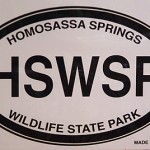
-
The official abbreviation for the Ellie Schiller Homosassa Springs Wildlife State Park.
-
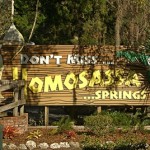
-
The original “attraction” sign by the original parking lot (still in use).
-
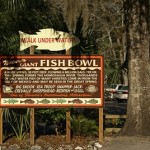
-
The park was one a private “attraction.”
-
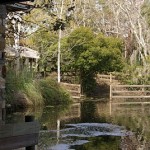
-
Leaving the boat dock at the ESHSWSP visitor Center on US-19.
-
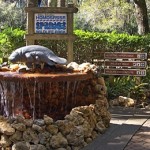
-
The start of the boardwalk through ESHSWSP.
-
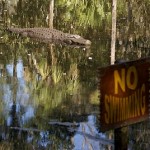
-
No kidding!
-
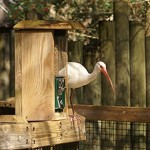
-
This Ibis knows where the food comes from.
-
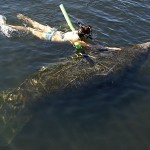
-
A woman snorkeling with a wild Manatee at Homosassa Springs.
-
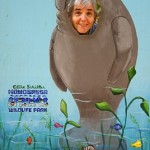
-
Manatee Linda.
-
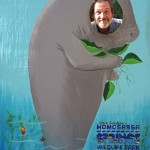
-
Manatee Bruce.
-
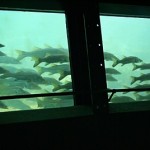
-
Underwater viewing windows.
